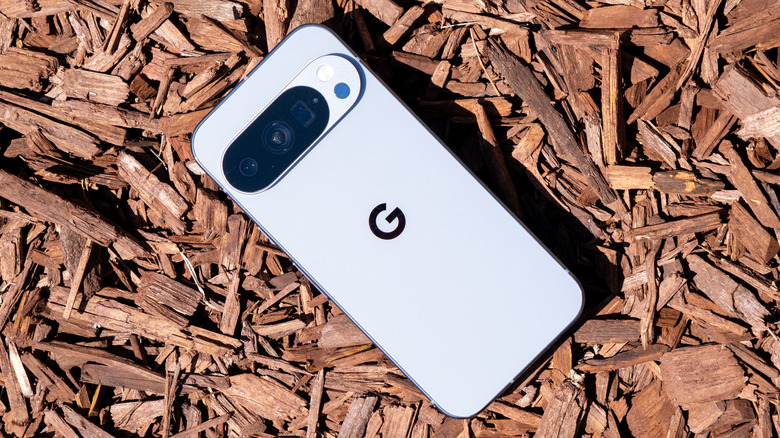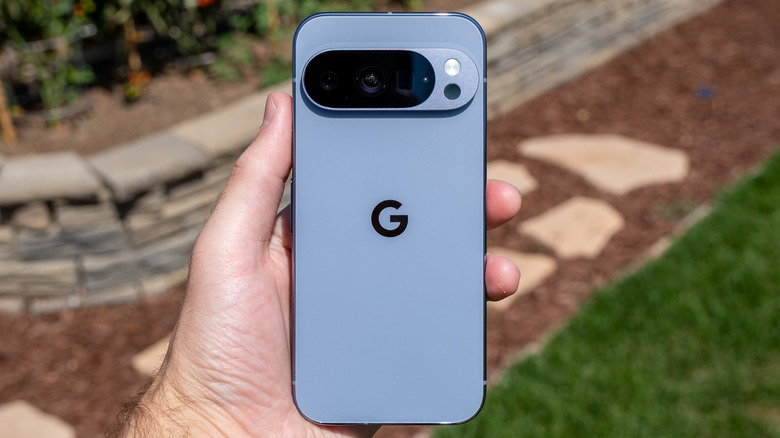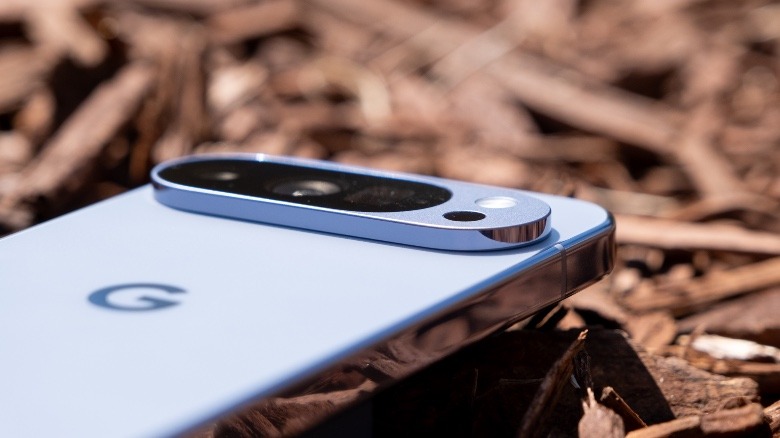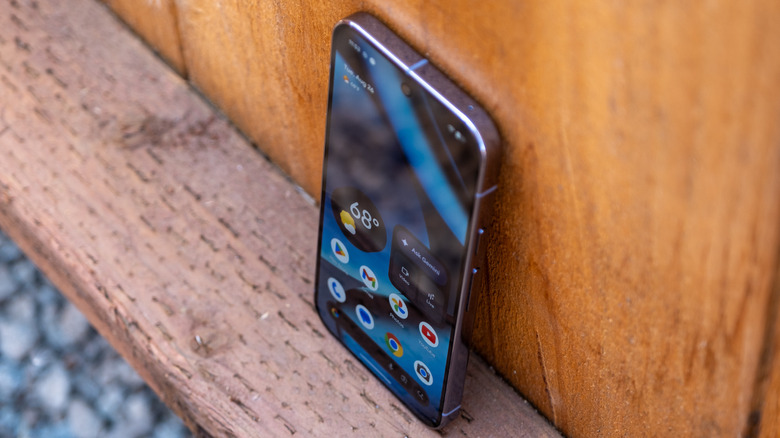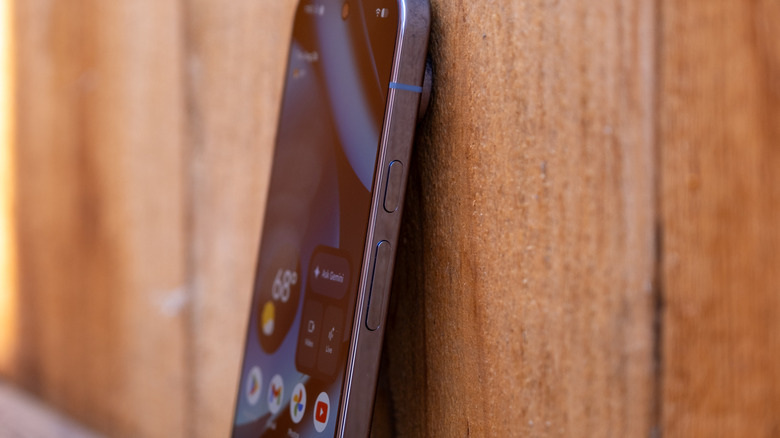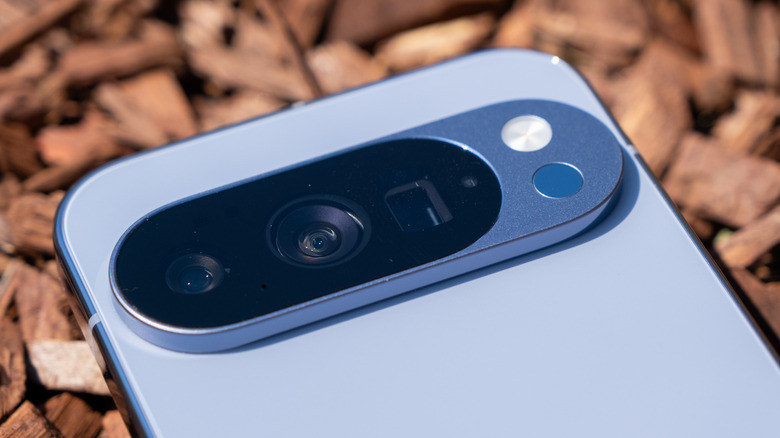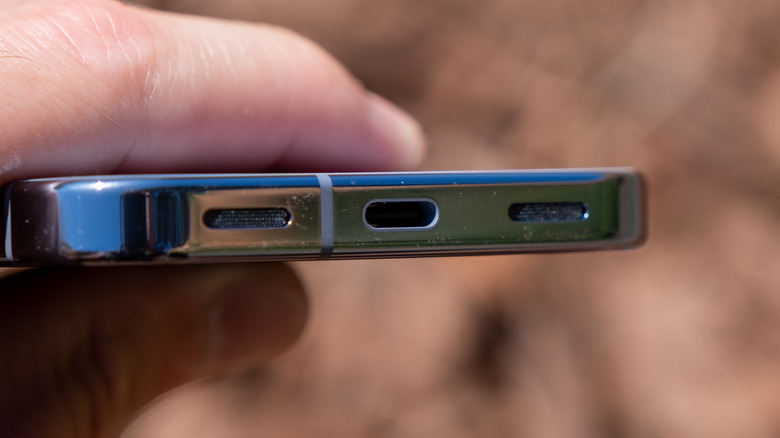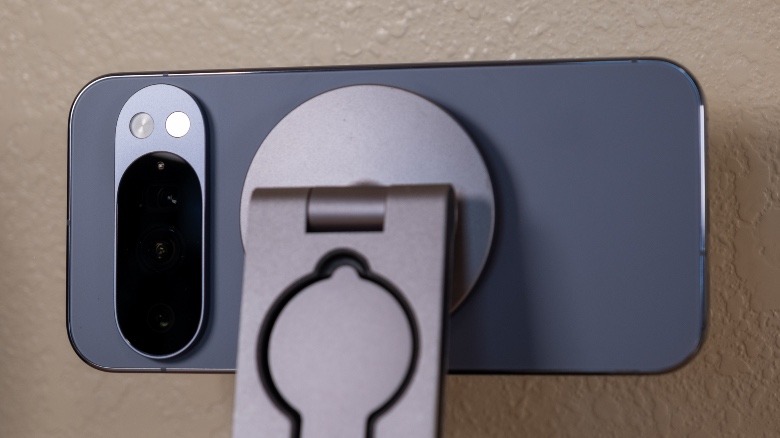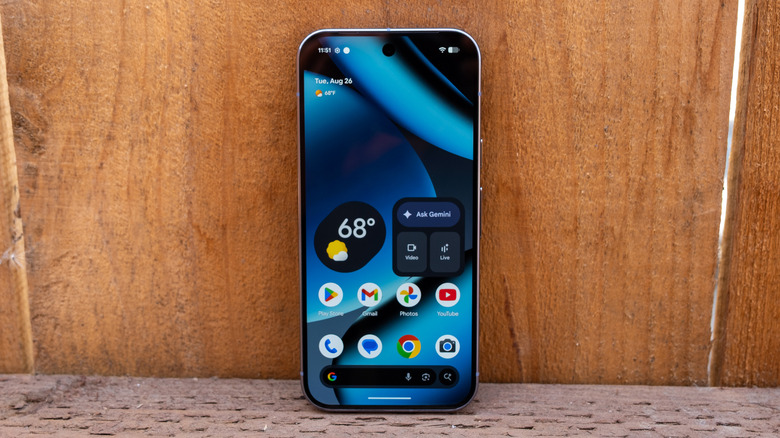Google Pixel 10 Pro Review: The Best Android Has To Offer Right Now
Base-level smartphones are getting a whole lot better. Over time, the features that were reserved for more expensive flagship phones eventually get cheaper to make and easier to add to lower-priced phones. Case in point: the base Pixel 10 has a telephoto camera this year — doing away with one of the main differences between the standard and "Pro" Pixel phones of the last few years.
So, where does that leave the Pixel 10 Pro? Well, it leaves it in a slightly different spot. Every phone in the Pixel 10 lineup has three cameras, the same performance, and helpful new features like full Qi2 support. In the end, you might assume that you should just save your money and go for the base Pixel 10 instead of its more expensive sibling.
But I still think there's a case to be made for the Pixel 10 Pro, and its larger counterpart, the Pixel 10 Pro XL, which I'll go over in a separate review. Yes, the basic hardware features are the same — but there are still plenty of ways the Pixel 10 Pro is a better phone than the standard Pixel 10.
Google Pixel 10 Pro design
Google completely revamped the design of the Pixel series with last year's Pixel 9, so I certainly don't mind that the Pixel 10 Pro looks mostly the same as last year's device. In fact, I'm glad it does.
There are plenty of things that I love about the Pixel 10 Pro's design, and all of those things come together in what I think is the most premium-feeling, well-built Android phone you can get right now. Sure, many of its design traits are taken straight from the iPhone, but I'm certainly not complaining when the traits that are taken from the iPhone help elevate the quality.
You'll get things like the rounded edges on the glossy aluminum frame, the matte glass back with a glossy Google logo, and so on. On both the front and back you'll get Gorilla Glass Victus 2, helping make the phone more durable — despite the fact that it's not Gorilla Armor, Corning's flagship product. That glass, as mentioned, is coupled with an aluminum frame, and as a whole, the device has an IP68 rating.
While there are plenty of design elements that are similar to the iPhone 16 Pro, there are still some major differences, and some of them I really like. For example, Google has stuck with its camera bar on the back. And while the look took some getting used to when Google first used it in the Pixel 6, I actually really like it now and appreciate that it helps stabilize the phone on a table, so that it doesn't wobble when I touch the screen. To be fair, I'm rarely tapping the screen of an iPhone hard enough for the phone to actually move, but I still like that the Pixel 10 Pro is a little more stable.
The rest of the design of the phone is more or less as expected. The power button and volume rocker are on the right edge and there's a USB-C port on the bottom. Noticeably absent is a SIM tray, which is due to the fact that Google has moved entirely to eSIM for the Pixel 10 Pro. I'm not going to get into whether or not that's a good move or bad move here. I kind of like eSIM, but I've heard plenty of horror stories. Regardless of your preference, you'll need to download your SIM if you want to use the Pixel 10 Pro.
The phone comes in four colors: Moonstone, Jade, Porcelain, and Obsidian. I'm reviewing the Moonstone model, which is a kind of blue-gray. It looks great. Overall, the Google Pixel 10 Pro is stunningly premium in both look and feel. It's comfortable to hold and feels nice and durable.
Google Pixel 10 Pro display
On the front of the phone can be found a 6.3-inch LTPO OLED screen with a 1,280 x 2,856 pixel resolution, equating to a pixel density of 495 pixels per inch. Frankly, it looks stunning.
The high resolution helps make text crisp, even in smaller fonts, and the fact that it's an LTPO OLED screen means that it can range from 1Hz to 120Hz. That doesn't mean that it'll feel smoother than the standard OLED screen on the base Pixel 10, which can still reach 120Hz. But it does mean that it'll be a little more power efficient, considering the fact that it can range all the way down to 1Hz. Therefore, it doesn't have to refresh the display as often when there's a static image on the screen.
The display can reach a peak brightness of 3,300 nits, which is incredibly bright. I found that the device got easily bright enough to see what's on the screen outdoors in direct sunlight, and I rarely turned the display higher than 80% or so.
Really, there's nothing more I would have wanted from the screen on the Pixel 10 Pro. It addresses the only minor criticisms you could possible have with the Pixel 10, which is a slightly lower resolution (that's still easily high enough), and the lack of an LTPO panel, which impacts power efficiency more than how the screen looks anyway.
Google Pixel 10 Pro performance
Under the hood, the Pixel 10 Pro offers Google's new Tensor G5 chip, which is the first Tensor chip to be manufactured by TSMC and makes use of TSMC's 3nm process. For the uninitiated, that's the same as other high-end chips out there right now, like Apple's A18 Pro and the Qualcomm Snapdragon 8 Elite. In the Pixel 10 Pro, the chip is coupled with 16GB of RAM, along with 128GB, 256GB, 512GB, and 1TB storage options.
So, does that translate to a radically better-performing chip in the Pixel 10 Pro compared to last year's Pixel 9 series? Well, if you're just going by the numbers, not necessarily — the Tensor G5 doesn't quite reach the heights of the A18 Pro and Snapdragon 8 Elite in benchmarks. In other words, the basic CPU performance of the Tensor G5 isn't as impressive as those other chips, but that's unlikely to necessarily translate to a massive difference in daily use. I found the phone to be more than powerful enough, easily handling heavy multitasking, gaming, and more without breaking a sweat. I suspect most will have a similar experience.
Part of that is helped along by the Pixel 10 Pro's vapor chamber cooling system, which means it will perform a little better than the base Pixel 10, which lacks that cooling. The end result is that you might find the phone heats up less and sustains high levels of performance over longer periods of time.
If there is going to be a noticeable difference between Google and its competitors in performance, it's likely to be down the line as the phones start to reach the end of their life. Extra headroom in performance means a phone like the iPhone 16 Pro might still perform like new in five years, while the Pixel 10 Pro doesn't. But that's just speculation. It's not five years in the future yet, so it's impossible to tell.
And Google's focus on performance is likely more to do with AI processing than basic CPU. Google is packing its phones with AI features, and that means beefing up the TPU on the Tensor G5 rather than focusing as much on the CPU. All that to say that no, the Tensor G5 doesn't change the game in terms of the Pixel series' performance, but you should still expect the Pixel 10 Pro to perform very well.
Google Pixel 10 Pro speakers
We don't usually hear much about phone speakers, but this year, Google is saying that all devices in the Pixel 10 series have taken a step forward. Indeed, the speakers built into the Pixel 10 Pro sound quite good.
To be clear, these are still phone speakers and you're not going to get tons of bass or ultra-clear high end. You'll still need a pair of headphones if you want really good audio, but the speakers built into the Pixel 10 Pro are better than the vast majority of other phones out there. I find that the iPhone 16 Pro's speakers offer a bit better bass response, though they can get to a similar volume, which is pretty decent for phone speakers. Overall, the speakers built into the Pixel 10 Pro are very good.
Google Pixel 10 Pro camera
The camera, of course, has always been a major focus of the Pixel series, and that's no different with the Pixel 10 Pro. But while Pixel phones have always offered excellent cameras, this year, many of the camera features are AI-related rather than hardware-related. This has been a trend for a few years now, but the Pixel 10 Pro's AI-based camera features represent one of the first times that you might be using AI for your photos without even knowing about it.
Before we get to that, let's talk about the basics. The Pixel 10 Pro has a triple camera system with a 50-megapixel main camera, a 48-megapixel ultrawide camera with a 123-degree field of view, and a 48-megapixel periscope telephoto camera with 5x optical zoom. It's a good, versatile camera system — and while you will get three cameras on the base Pixel 10, those built into the Pixel 10 Pro are better overall, thanks to their larger sensors. Of course, Pixel fans might notice that these are the same cameras built into the Pixel 9 Pro, and it is true that the camera system is built from the same hardware. But the camera is still going to be a little different due to the Tensor G5's processing.
Indeed, the Pixel 10 Pro was able to capture bright, vibrant, and detailed shots the vast majority of the time. In good lighting conditions, images were colorful and vibrant. And while the colors produced by the Pixel 10 Pro were perhaps a little more saturated than those captured by the iPhone 16 Pro, that's really more of a personal preference issue than anything else, and they still weren't quite as saturated as images captured by the Samsung Galaxy S25 Ultra. Additionally, I found the HDR processing on the Pixel 10 Pro to be excellent, ensuring that the phone was able to get good detail in both darker shadows and brighter highlights than both the Galaxy S25 Ultra and the iPhone 16 Pro.
The device also did very well in low light conditions, capturing more detail than the Pixel 9 Pro, and producing crisper images that looked closer to real life. The finer detail was very apparent in textured environments, like areas with grass.
Then there's zoom photography, which we'll kind of talk about in two different parts. At lower levels of zoom, like at 5x or so, the Pixel 10 Pro captured solid shots overall, getting good detail from most environments. I did find that the iPhone 16 Pro did a little better at these levels of zoom, with slightly more realistic textures and colors. 5x is the native zoom level for the telephoto cameras on the iPhone 16 Pro and Google Pixel 10 Pro, so at these levels, you won't get much in the way of AI enhancement beyond basic image processing.
AI camera features
But, of course, processing zoom is one of the headline features of the Pixel 10 Pro. At higher levels of zoom, Google is using generative AI to enhance images. What that basically means is that after being processed, the image you see isn't one that you actually captured at all. It's a completely AI-generated image that uses the image you did capture to inform its output.
I'm not going to get philosophical about this in this review. You can decide for yourself whether or not you feel comfortable with treating these images as photos, but I will say the feature worked surprisingly well. This feature is one of the reasons that Google is able to offer up to 100x zoom on the Pixel 10 Pro, and I was pretty shocked with how well it worked.
Typically, at 100x zoom, images captured by smartphones are grainy, blobby messes. There are plenty of phones that can zoom to these levels, and while you won't get anywhere near that level of zoom on an iPhone, you can get there on a device like the Galaxy S25 Ultra. The images captured by the Pixel 10 Pro and processed by its Pro Res Zoom feature were much more detailed and natural-looking than those captured by the Galaxy device. There are some areas in which this feature struggles. At times, for example, it wasn't able to figure out what text said and produced weird-looking characters. But I actually found that for the most part, it worked well, even if the end result wasn't exactly true to what was in the scene in real life.
There are other AI-based features built into the camera on the Pixel 10 Pro, too. For example, there's the new text-based editing tool that allows you to explain via natural language how you want the device to make edits. It worked pretty well, and it's a feature that's available on all Pixel 10 devices.
As a whole, the camera built into the Pixel 10 Pro is as good or better than any other phone in this price range. On average, images look excellent, offering good detail and great HDR processing. In day-to-day situations, I would say that the Pixel 10 Pro is about as good as the likes of the iPhone 16 Pro or Galaxy S25 Ultra. But it's those edge cases, like extreme levels of zoom, where the Pixel 10 Pro outdoes the competition.
Google Pixel 10 Pro battery and charging
Powering the Pixel 10 Pro is a 4,870mAh battery, and I found that it performed quite well. Google claims over 30 hours of battery life. However, power users should still only expect to get around a day of actual use. Light users may be able to stretch usage to a few days, but if you're already in the habit of charging your phone at night, it's a habit you'll want to maintain.
More interesting than the battery is how you charge that battery. The phone has 30-watt wired charging, which is only fine, and I would like to see Google improve wired charging speeds in future generations, especially considering the fact that plenty of Chinese phones offer charging speeds that are well over 100 watts. However, the Pixel 10 Pro also supports Qi2 wireless charging, including both the full 25-watt wireless charging speed and the magnets that make Qi2 so versatile.
That means that you can use the Pixel 10 Pro with any MagSafe or Qi2 accessories like charging stands, wallets, and so on. This is a feature that I've been waiting on for a long time. I always have an iPhone on a charging stand at my desk, and I love being able to see notifications as they come in and the fact that I can easily grab the phone while ensuring that it's always charged up. I regularly use a MagSafe wallet, too. I can only hope that other Android phone manufacturers follow suit. I don't want to see any more of this so-called "Qi2 ready" marketing.
Google PIxel 10 Pro software
The Pixel series has always offered my favorite software experience on any Android smartphone, and that remains true with the Pixel 10 series. On the Pixel 10 Pro, you'll get smooth, reliable software. Everything is where you expect it to be. There are no duplicate apps like you often find on other Android devices, and I really like the widgets that Google offers for the home screen.
Of course, Google is all in on AI, and this year is no different. There are quite a few AI-based features baked into the Pixel Android skin. New for this year are features like Daily Hub, which is similar to Samsung's Now Brief and can give you an overview of things like calendar events and the weather for your day. It's built using generative AI, but unlike Samsung's approach, it's a little less front and center, which I like. Daily Hub is supposed to pop up on widgets on the home screen, but I found it mostly accessible in the Discover feed. It's certainly not a perfect feature, though. For example, the way it phrases things might be a little strange if you share a calendar with a significant other or friend. Despite the fact that a calendar event was labeled with my wife's name, it said that I had a doctor's appointment one day. Thankfully, it also shows the actual calendar event name, and you can tap into your calendar for more information.
Other new features include Magic Queue, which I wasn't really able to get to work, but is supposed to surface information as you need it in things like the Messages app or in Gmail. Unlike the base Pixel 10, the Pixel 10 Pro comes with a year free of the Google AI Pro subscription, which will get you access to the latest and greatest Gemini models along with 2TB of storage in Google Drive.
Google says that the Pixel 10 Pro will get seven years of operating system updates, which is excellent and on par with the likes of the iPhone. Of course, Google hasn't had to live up to these claims just yet, as it only started offering this many updates a few years ago. Hopefully, the Pixel 10 Pro will indeed get Android 23 or whatever it's called seven years from now.
Conclusions
The Google Pixel 10 Pro is my favorite Android smartphone. It's incredibly well designed, offers an excellent camera, good enough performance, good battery life, versatile charging, and more. It also happens to offer what I consider to be the best software experience on an Android phone, which can't be overstated. All of these things come together to make for a phone that's well rounded and easy to use. It's the closest thing to an iPhone 16 Pro you can get if you want to stick with Android.
The competition
There's quite a bit of competition to the Pixel 10 Pro. Notably, there's the Galaxy S25 Ultra, which is technically a more powerful phone. That device has the Qualcomm Snapdragon 8 Elite processor, which tops the Tensor G5. It also has five cameras instead of four, adding a second telephoto camera at 3x optical zoom. I vastly prefer the software on the Pixel 10 Pro, though, and I think the quality of the images captured by the camera are slightly better in some ways. Much of this is down to personal preference, and if you like Samsung's approach to things like software, then the Galaxy S25 Ultra is still an excellent phone.
Then there's the base Pixel 10, which is more like the Pro Pixel than ever before. The base Pixel 10 has a triple camera system, too, and it also supports Qi2 and has many of the same AI features. The cameras built into the Pixel 10 aren't quite as high quality, even if there are three of them. Additionally, the Pixel 10 doesn't have the Pro Res Zoom feature, maxing out at 20x zoom instead. You will still get other AI features like the Daily Hub. It's also worth mentioning that if you already subscribe to Google AI Pro for things like Google Drive storage, then it's absolutely worth going for the Pixel 10 Pro instead of the base Pixel 10. That year of Google AI Pro means that the Pixel 10 Pro will essentially pay for the difference itself.
Should I buy the Google Pixel 10 Pro?
Yes. It's also worth considering the base Pixel 10, but the Pixel 10 Pro is an excellent phone.
